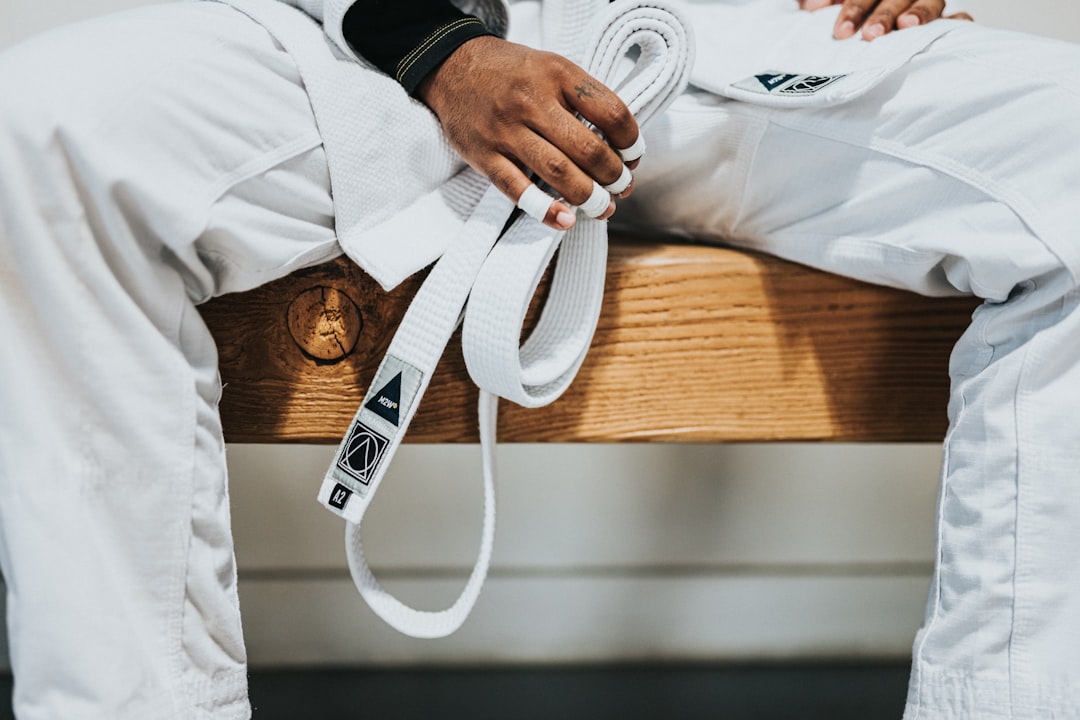Aikido vs. Judo
What's the Difference?
Aikido and Judo are both martial arts that originated in Japan and share some similarities, but they also have distinct differences. Aikido focuses on redirecting an opponent's energy and using their own force against them, emphasizing fluid movements and joint locks. It is often seen as a more defensive martial art, with an emphasis on blending with an attacker's movements rather than directly opposing them. On the other hand, Judo is more of a competitive sport that involves throwing opponents to the ground and immobilizing them with pins or joint locks. It places a greater emphasis on physical strength and technique, with a focus on achieving victory through forceful throws and submissions. While both martial arts have their own unique philosophies and techniques, they both offer valuable self-defense skills and promote physical fitness and mental discipline.
Comparison

| Attribute | Aikido | Judo |
|---|---|---|
| Origin | Japan | Japan |
| Founder | Morihei Ueshiba | Jigoro Kano |
| Year of Development | 20th century | 19th century |
| Meaning | "The Way of Harmony with the Spirit" | "The Gentle Way" |
| Focus | Self-defense, spiritual development | Self-defense, sport |
| Techniques | Joint locks, throws, pins | Throws, pins, grappling |
| Uniform | Keikogi (training uniform), Hakama (pleated skirt-like pants) | Judogi (thick cotton jacket and pants) |
| Competitive Aspect | Less emphasis on competition | Strong competitive aspect |
| Ranking System | Kyu and Dan system | Kyu and Dan system |
| International Federation | Aikikai Foundation | International Judo Federation (IJF) |

Further Detail
Introduction
Aikido and Judo are two popular martial arts that originated in Japan. While both disciplines share some similarities, they also have distinct characteristics that set them apart. In this article, we will explore the attributes of Aikido and Judo, highlighting their techniques, philosophies, training methods, and applications.
Techniques
Aikido focuses on blending with an opponent's energy and redirecting it to neutralize their attack. It emphasizes circular movements, joint locks, and throws. Aikido techniques often involve using an opponent's momentum against them, utilizing their own force to control and subdue them. On the other hand, Judo primarily emphasizes throws and grappling techniques. It aims to immobilize or subdue an opponent by using their own strength and balance against them. Judo practitioners learn various throws, pins, and submission holds to gain control over their opponents.
Philosophy
Aikido is deeply rooted in the philosophy of harmony and non-violence. Its founder, Morihei Ueshiba, believed in the principle of "Aiki," which means blending with the energy of the universe. Aikido practitioners strive to resolve conflicts peacefully and seek to protect themselves and their attackers without causing harm. Judo, on the other hand, follows the principle of "maximum efficiency with minimum effort." Its founder, Jigoro Kano, aimed to create a martial art that could be practiced as a sport while also promoting personal development. Judo practitioners focus on using their opponent's energy to their advantage, achieving victory through technique rather than brute force.
Training Methods
Aikido training often involves partner practice, where practitioners take turns being the attacker and defender. Techniques are practiced in a cooperative manner, with an emphasis on timing, distance, and proper execution. Aikido practitioners also practice "ukemi," which is the art of falling safely to minimize the risk of injury during training. Judo training, on the other hand, involves intense physical conditioning and sparring. Judo practitioners engage in randori, which is a form of free practice, where they apply their techniques against resisting opponents. Judo training also includes groundwork, known as ne-waza, where practitioners learn to control and submit their opponents on the mat.
Applications
Aikido techniques are primarily designed for self-defense situations. Its circular movements and joint locks allow practitioners to redirect and neutralize an attacker's aggression without causing significant harm. Aikido techniques are often used to control and restrain an opponent until help arrives or to subdue them without causing permanent injury. Judo, on the other hand, has a strong competitive aspect and is practiced as an Olympic sport. Judo techniques are used in both sportive and self-defense contexts. The throws and grappling techniques learned in Judo can be effective in neutralizing an attacker and gaining control over them.
Conclusion
While Aikido and Judo share Japanese origins and martial arts principles, they differ in their techniques, philosophies, training methods, and applications. Aikido focuses on blending with an opponent's energy and redirecting it, while Judo emphasizes throws and grappling techniques. Aikido promotes harmony and non-violence, while Judo aims for maximum efficiency with minimum effort. Aikido training involves partner practice and cooperative techniques, while Judo training includes intense physical conditioning and sparring. Aikido is primarily used for self-defense, while Judo is practiced as a competitive sport. Both martial arts offer unique benefits and can be valuable in different contexts, depending on an individual's goals and preferences.
Comparisons may contain inaccurate information about people, places, or facts. Please report any issues.